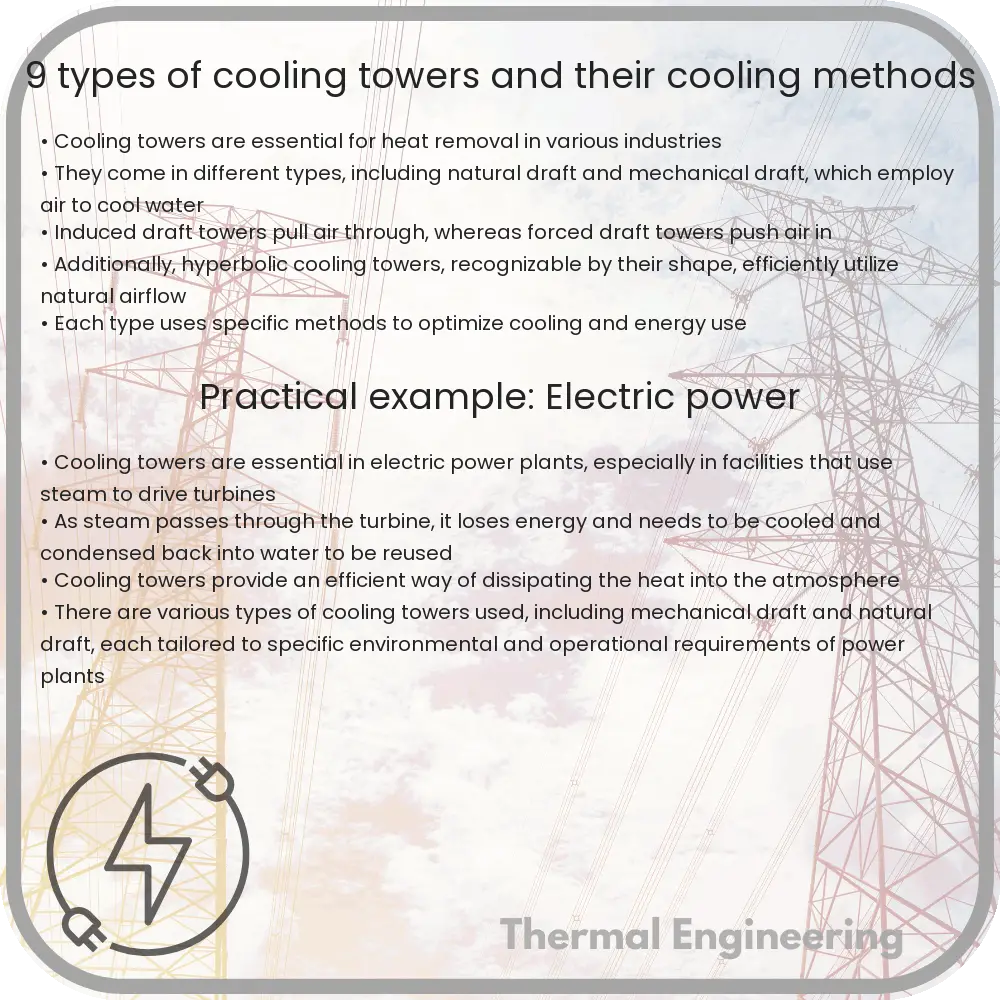Learn about cooling towers, their types based on airflow, heat transfer methods, construction, and specific functions in industrial and HVAC systems.

Introduction to Cooling Towers
Cooling towers are a specialized heat exchanger system that allows water and air to come into contact with each other to lower the temperature of the water. As the water cools, it absorbs heat from the air and evaporates. This technology is widely used in various industrial applications and HVAC (Heating, Ventilating, and Air Conditioning) systems to expel heat into the atmosphere. Broadly speaking, cooling towers are categorized based on their airflow generation methods, heat transfer methods, and construction or installation type.
Types of Cooling Towers Based on Airflow Generation
- Natural Draft Cooling Towers: These towers utilize the natural upward flow of air to cool the water. They are typically very large and depend heavily on the ambient weather conditions.
- Mechanical Draft Cooling Towers: Equipped with fans or other mechanical systems to force or draw air through the tower, these are more effective than natural draft towers and can be controlled more precisely.
Types of Cooling Towers Based on Heat Transfer Methods
- Open Circuit Cooling Towers: Water is directly exposed to the air and part of the water evaporates; hot water from the system is cooled and sent back to cool the system again.
- Closed Circuit Cooling Towers: Also known as Fluid Coolers, these have a heat exchanger that separates the process cooling fluid from the outside air, keeping the circulated fluid clean and uncontaminated.
- Dry Cooling Towers: Unlike the wet types, dry cooling towers use only air to cool the working fluid, mostly in power plants where water is scarce.
- Hybrid Cooling Towers: These combine both dry and wet cooling processes, optimizing both water usage and cooling efficiency, especially useful in varying climatic conditions.
Types of Cooling Towers Based on Construction Type
- Field Erected Towers: As the name suggests, these towers are built on-site and are ideal for industries requiring large-scale cooling.
- Factory Assembled Towers: Often used in light industries and HVAC applications, these are preassembled and easily transported to the installation site.
Specialized Cooling Towers Based on Specific Functions
- Counterflow Cooling Towers: In these towers, the air flow is directed opposite the water flow (air moves upward while water falls down). This method allows for a smaller footprint and more effective cooling.
- Crossflow Cooling Towers: With air flowing perpendicular to the water flow, these towers are easier to maintain because of their accessibility to internal parts of the tower.
- Induced Draft Cooling Towers: These towers have fans at the top to suck air through the tower, increasing efficiency and reducing the impact of the outside wind on the performance of the tower.
- Forced Draft Cooling Towers: These have fans at the base of the cooling tower which push air through the system, typically smaller and also more susceptible to recirculation issues.
Conclusion
Cooling towers are an essential component in many industrial processes and air conditioning systems where large scale heat rejection is needed. Understanding the different types of cooling towers and their operational principles helps in selecting the right tower for specific cooling needs. Whether it’s a massive natural draft tower or a compact factory assembled unit, the basic principle of heat removal through water evaporation remains the same, albeit optimized to meet different industrial and environmental demands.